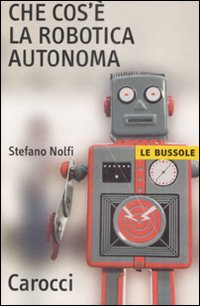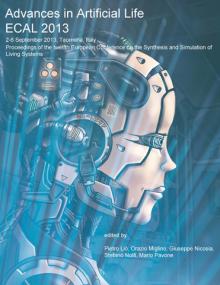|
Lio' P, Miglino O., Nicosia G., Nolfi S. and Pavone M. (2013). Advances in Artificial Life, Proceedings of the Twelfth European Conference on the Synthesis and Simulation of Living Systems (ECAL 2013). Cambridge. MA: MIT Press. pdf |
|
Nolfi S., Mirolli M. (2010). Evolution of Communication and Language in Embodied Agents. Berlin: Springer Verlag. |
 |
Nolfi S. (2009). Che Cos'è la Robotica Autonoma. Roma: Carocci Editore. Materiale Aggiuntivo |
 |
Nolfi S., Ikegami T., and Tani J. (2008). Special Issue on "Behavior and Mind as a Complex Adaptive System", Adaptive Behavior, 16: 101-103. |
 |
Nolfi S., Baldassarre G., Calabretta R., Hallam J., Marocco D., Miglino O., Meyer J-A & Parisi D. (2006). From animals to animats 9: Proceedings of the Ninth International Conference on Simulation of Adaptive Behaviour. LNAI. Volume 4095. Berlin, Germany: Springer Verlag. |
 |
Nolfi S. (2004). Special Issue on "Evolutionary Robotics: Looking forward". Connection Science. |









